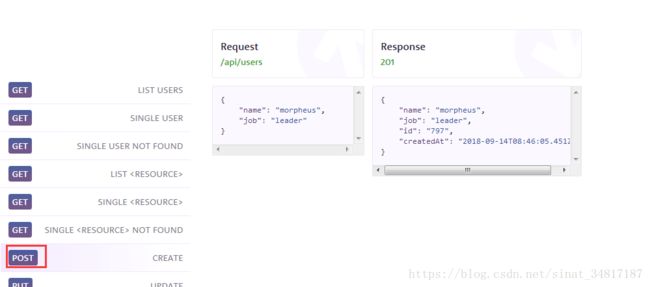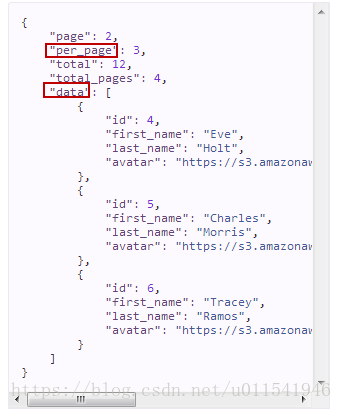Java接口自动化测试框架学习(三)
前面项目已创建好,依赖包添加完成,testng也已添加
项目结构如下:

1.设计配置文件
在src/main/java下新建一个包:com.qa.config,然后在新包下新建一个config.properties文件,文件内容如下

2.加载读取properties文件
然后在src/main/java下新建一个包:com.qa.base,新建一个TestBase.java,这个类作为所有接口请求测试的父类,都需要继承这个父类,目前我们就写一个构造方法,实现加载读取properties文件。
我们不想在代码里写死例如像HTTP响应状态码200这样的硬编码,所以,这里我们在TestBase.java里把状态码给用常量写出来,方便每一个TestNG测试用例去调用去断言
package com.qa.base;
import java.io.FileInputStream;
import java.io.FileNotFoundException;
import java.io.IOException;
import java.util.Properties;
//接口请求测试的父类
public class TestBase {
public Properties prop;
//写一个构造函数
public TestBase() {
try {
prop = new Properties();
FileInputStream fis = new FileInputStream(System.getProperty("user.dir")+
"/src/main/java/com/qa/config/config.properties");
prop.load(fis);
} catch (FileNotFoundException e) {
e.printStackTrace();
} catch (IOException e) {
e.printStackTrace();
}
}
}
3. 新建一个log4j.properties文件
在Eclipse上点击当前项目名,右键new -source folder,输出src/main/config,点击确定,然后在src/main/config下新建一个log4j.properties文件,内容如下。
### set log levels ###
log4j.rootLogger = INFO, stdout, file
log4j.appender.stdout = org.apache.log4j.ConsoleAppender
log4j.appender.stdout.Target = System.out
log4j.appender.stdout.layout = org.apache.log4j.PatternLayout
log4j.appender.stdout.layout.ConversionPattern = %d{yyyy-MM-dd HH:mm:ss SSS} %-5p %c{1}:%L - %m%n
log4j.appender.file = org.apache.log4j.DailyRollingFileAppender
log4j.appender.file.File = ./log/apilog.log
# overwirte the old log file
log4j.appender.file.Append = false
##
log4j.appender.file.Threshold = INFO
log4j.appender.file.layout = org.apache.log4j.PatternLayout
log4j.appender.file.layout.ConversionPattern = %d{yyyy-MM-dd HH:mm:ss SSS} %-5p %c{1}:%L - %m%n
在项目根目录下新建log文件夹:用于日志输出存放
新建这个文件夹是上面log4j.properties文件我们设置的日志保存文件路径是在./log文件夹下。
4.写一个JSON解析的工具类
在src/main/java下新建一个包:com.qa.util,然后在新包下创建一个TestUtil.java类。
package com.qa.util;
import com.alibaba.fastjson.JSONArray;
import com.alibaba.fastjson.JSONObject;
public class TestUtil {
/**
*
* @param responseJson ,这个变量是拿到响应字符串通过json转换成json对象
* @param jpath,这个jpath指的是用户想要查询json对象的值的路径写法
* jpath写法举例:1) per_page 2)data[1]/first_name ,data是一个json数组,[1]表示索引
* /first_name 表示data数组下某一个元素下的json对象的名称为first_name
* @return,返回first_name这个json对象名称对应的值
*/
//1 json解析方法
public static String getValueByJPath(JSONObject responseJson, String jpath){
Objectobj = responseJson;
for(String s : jpath.split("/")) {
if(!s.isEmpty()) {
if(!(s.contains("[") || s.contains("]"))) {
obj = ((JSONObject) obj).get(s);
}else if(s.contains("[") || s.contains("]")) {
obj =((JSONArray)((JSONObject)obj).get(s.split("\\[")[0])).get(Integer.parseInt(s.split("\\[")[1].replaceAll("]", "")));
}
}
}
return obj.toString();
}
}
简单解释下上面的代码,主要是查询两种json对象的的值,第一种最简单的,这个json对象在整个json串的第一层,例如上面截图中的per_page,这个per_page就是通过jpath这个参数传入,返回的结果就是3. 第二种jpath的查询,例如我想查询data下第一个用户信息里面的first_name的值,这个时候jpath的写法就是data[0]/first_name,查询结果应该是Eve。
4.请求方法代码封装
在src/main/java下新建一个包:com.qa.restclient,然后新建一个RestClient.java文件,下面是具体代码,已加日志输出
这个Java接口自动化测试框架的核心就是Get和POST请求方法的封装过程。
package com.qa.restclient;
import java.io.IOException;
import java.util.HashMap;
import java.util.Map;
import org.apache.http.ParseException;
import org.apache.http.client.ClientProtocolException;
import org.apache.http.client.methods.CloseableHttpResponse;
import org.apache.http.client.methods.HttpDelete;
import org.apache.http.client.methods.HttpGet;
import org.apache.http.client.methods.HttpPost;
import org.apache.http.client.methods.HttpPut;
import org.apache.http.entity.StringEntity;
import org.apache.http.impl.client.CloseableHttpClient;
import org.apache.http.impl.client.HttpClients;
import org.apache.http.util.EntityUtils;
import org.apache.log4j.Logger;
import com.alibaba.fastjson.JSON;
import com.alibaba.fastjson.JSONObject;
public class RestClient {
final static Logger Log = Logger.getLogger(RestClient.class);
/**
* 不带请求头的get方法封装
* @param url
* @return 返回响应对象
* @throws ClientProtocolException
* @throws IOException
*/
public CloseableHttpResponse get (String url) throws ClientProtocolException, IOException {
//创建一个可关闭的HttpClient对象
CloseableHttpClient httpclient = HttpClients.createDefault();
//创建一个HttpGet的请求对象
HttpGet httpget = new HttpGet(url);
//执行请求,相当于postman上点击发送按钮,然后赋值给HttpResponse对象接收
Log.info("开始发送get请求...");
CloseableHttpResponse httpResponse = httpclient.execute(httpget);
Log.info("发送请求成功!开始得到响应对象。");
return httpResponse;
}
/**
* 带请求头信息的get方法
* @param url
* @param headermap,键值对形式
* @return 返回响应对象
* @throws ClientProtocolException
* @throws IOException
*/
public CloseableHttpResponse get (String url,HashMap headermap) throws ClientProtocolException, IOException {
//创建一个可关闭的HttpClient对象
CloseableHttpClient httpclient = HttpClients.createDefault();
//创建一个HttpGet的请求对象
HttpGet httpget = new HttpGet(url);
//加载请求头到httpget对象
for(Map.Entry entry : headermap.entrySet()) {
httpget.addHeader(entry.getKey(), entry.getValue());
}
//执行请求,相当于postman上点击发送按钮,然后赋值给HttpResponse对象接收
CloseableHttpResponse httpResponse = httpclient.execute(httpget);
Log.info("开始发送带请求头的get请求...");
return httpResponse;
}
/**
* 封装post方法
* @param url
* @param entityString,其实就是设置请求json参数
* @param headermap,带请求头
* @return 返回响应对象
* @throws ClientProtocolException
* @throws IOException
*/
public CloseableHttpResponse post (String url, String entityString, HashMap headermap) throws ClientProtocolException, IOException {
//创建一个可关闭的HttpClient对象
CloseableHttpClient httpclient = HttpClients.createDefault();
//创建一个HttpPost的请求对象
HttpPost httppost = new HttpPost(url);
//设置payload
httppost.setEntity(new StringEntity(entityString));
//加载请求头到httppost对象
for(Map.Entry entry : headermap.entrySet()) {
httppost.addHeader(entry.getKey(), entry.getValue());
}
//发送post请求
CloseableHttpResponse httpResponse = httpclient.execute(httppost);
Log.info("开始发送post请求");
return httpResponse;
}
/**
* 封装 put请求方法,参数和post方法一样
* @param url
* @param entityString,这个主要是设置payload,一般来说就是json串
* @param headerMap,带请求的头信息,格式是键值对,所以这里使用hashmap
* @return 返回响应对象
* @throws ClientProtocolException
* @throws IOException
*/
public CloseableHttpResponse put (String url, String entityString, HashMap headerMap) throws ClientProtocolException, IOException {
CloseableHttpClient httpclient = HttpClients.createDefault();
HttpPut httpput = new HttpPut(url);
httpput.setEntity(new StringEntity(entityString));
for(Map.Entry entry : headerMap.entrySet()) {
httpput.addHeader(entry.getKey(), entry.getValue());
}
//发送put请求
CloseableHttpResponse httpResponse = httpclient.execute(httpput);
return httpResponse;
}
/**
* 封装 delete请求方法,参数和get方法一样
* @param url, 接口url完整地址
* @return,返回一个response对象,方便进行得到状态码和json解析动作
* @throws ClientProtocolException
* @throws IOException
*/
public CloseableHttpResponse delete (String url) throws ClientProtocolException, IOException {
CloseableHttpClient httpclient = HttpClients.createDefault();
HttpDelete httpdel = new HttpDelete(url);
//发送delete请求
CloseableHttpResponse httpResponse = httpclient.execute(httpdel);
return httpResponse;
}
/**
* 获取响应状态码,常用来和TestBase中定义的状态码常量去测试断言使用
* @param response
* @return 返回int类型状态码
*/
public int getStatusCode (CloseableHttpResponse response) {
int statusCode = response.getStatusLine().getStatusCode();
Log.info("解析,得到响应状态码:"+ statusCode);
return statusCode;
}
/**
*
* @param response, 任何请求返回返回的响应对象
* @return, 返回响应体的json格式对象,方便接下来对JSON对象内容解析
* 接下来,一般会继续调用TestUtil类下的json解析方法得到某一个json对象的值
* @throws ParseException
* @throws IOException
*/
public JSONObject getResponseJson (CloseableHttpResponse response) throws ParseException, IOException {
Log.info("得到响应对象的String格式");
String responseString = EntityUtils.toString(response.getEntity(),"UTF-8");
JSONObject responseJson = JSON.parseObject(responseString);
Log.info("返回响应内容的JSON格式");
return responseJson;
}
}
5.TestNG测试用例测试get方法
在src/test/java下新建一个包:com.qa.tests,然后新建一个GetApiTest.java类,写一个TestNG的测试用例来测试下我们上面写的Get请求方法
简单提一下TestNG的断言方法,我们一般测试都需要写断言的代码,否则这样的单元测试代码就没有意义。下面,我在statusCode和json解析的first_name进行断言。
package com.qa.tests;
import java.io.IOException;
import org.apache.http.client.ClientProtocolException;
import org.apache.http.client.methods.CloseableHttpResponse;
import org.apache.log4j.Logger;
import org.testng.Assert;
import org.testng.annotations.BeforeClass;
import org.testng.annotations.Test;
import com.alibaba.fastjson.JSONObject;
import com.qa.base.TestBase;
import com.qa.restclient.RestClient;
import com.qa.util.TestUtil;
public class GetApiTest extends TestBase {
TestBase testBase;
String host;
String url;
RestClient restClient;
CloseableHttpResponse closeableHttpResponse;
final static Logger Log = Logger.getLogger(GetApiTest.class);
@BeforeClass
public void setUp() {
testBase = new TestBase();
//Log.info("测试服务器地址为:"+ host.toString());
host = prop.getProperty("HOST");
//Log.info("当前测试接口的完整地址为:"+url.toString());
url = host + "/api/users?page=2";
}
@Test
public void getAPITest() throws ClientProtocolException, IOException {
Log.info("开始执行用例...");
restClient = new RestClient();
closeableHttpResponse = restClient.get(url);
//断言状态码是不是200
Log.info("测试响应状态码是否是200");
int statusCode = restClient.getStatusCode(closeableHttpResponse);
Assert.assertEquals(statusCode, RESPNSE_STATUS_CODE_200, "response status code is not 200");
JSONObject responseJson = restClient.getResponseJson(closeableHttpResponse);
//System.out.println("respon json from API-->" + responseJson);
//json内容解析
String s = TestUtil.getValueByJPath(responseJson,"data[0]/first_name");
Log.info("执行JSON解析,解析的内容是 " + s);
//System.out.println(s);
Log.info("接口内容响应断言");
Assert.assertEquals(s, "Eve","first name is not Eve");
Log.info("用例执行结束...");
}
}
经常使用的测试断言:
Assert.assertEquals(“现实结果”, “期待结果”,“断言失败时候打印日志消息”);
6.TestNG测试用例测试post方法
post接口示例:

这个接口的作用是创建用户,参数是一个json类型的数据,一个name一个job,两个JSON对象。发送请求之后,返回的JSON数据有name和job和id,以及创建时间这几个数据。
JAVA Bean类
写测试用例之前,我们需要提前准备好json数据【上边的name和job】,一般来说,在Java中JSON数据都是放在JAVA Bean类中,通过JSON把高级对象序列化成JSON对象。
在src/main/java中新建包:com.qa.data,然后新建一个Users.java,这个命名就参考接口的url单词就行。在postman或者网站该post方法,我们知道,需要name和job这两个json对象。我们新建一个bean类,同alt+shift+s,然后选择生成构造方法和set和get方法。
package com.qa.data;
public class Users {
private String name;
private String pwd;
private String srv_name;
public Users() {
super();
}
public Users(String name, String job,String srv_name) {
super();
this.name = name;
this.pwd = pwd;
this.srv_name = srv_name;
}
public String getName() {
return name;
}
public void setName(String name) {
this.name = name;
}
public String getPwd() {
return pwd;
}
public void setPwd(String pwd) {
this.pwd = pwd;
}
public String getSrv_name() {
return srv_name;
}
public void setSrv_name(String srv_name) {
this.srv_name = srv_name;
}
}
TestNG用例测试
在src/test/java下的com.qa.tests我们新建一个POST测试用例,现在我们的TestNG测试类代码如下:
package com.qa.tests;
import java.io.IOException;
import java.util.HashMap;
import org.apache.http.client.ClientProtocolException;
import org.apache.http.client.methods.CloseableHttpResponse;
import org.apache.http.util.EntityUtils;
import org.testng.Assert;
import org.testng.annotations.BeforeClass;
import org.testng.annotations.Test;
import com.alibaba.fastjson.JSON;
import com.alibaba.fastjson.JSONObject;
import com.qa.base.TestBase;
import com.qa.data.Users;
import com.qa.restclient.RestClient;
import com.qa.util.TestUtil;
public class PostApiTest extends TestBase {
TestBase testBase;
String host;
String url;
RestClient restClient;
CloseableHttpResponse closeableHttpResponse;
@BeforeClass
public void setUp() {
testBase = new TestBase();
host = prop.getProperty("HOST");
url = host + "/api/users";
}
@Test
public void postApiTest() throws ClientProtocolException, IOException {
restClient = new RestClient();
//准备请求头信息
HashMap headermap = new HashMap();
headermap.put("Content-Type", "application/json"); //这个在postman中可以查询到
//对象转换成Json字符串
Users user = new Users("Anthony","tester");
String userJsonString = JSON.toJSONString(user);
//System.out.println(userJsonString);
closeableHttpResponse = restClient.post(url, userJsonString, headermap);
//验证状态码是不是200
int statusCode = closeableHttpResponse.getStatusLine().getStatusCode();
Assert.assertEquals(statusCode, RESPNSE_STATUS_CODE_201,"status code is not 201");
//断言响应json内容中name和job是不是期待结果
String responseString = EntityUtils.toString(closeableHttpResponse.getEntity());
JSONObject responseJson = JSON.parseObject(responseString);
//System.out.println(responseString);
String name = TestUtil.getValueByJPath(responseJson, "name");
String job = TestUtil.getValueByJPath(responseJson, "job");
Assert.assertEquals(name, "Anthony","name is not same");
Assert.assertEquals(job, "tester","job is not same");
}
}
7.TestNG测试用例测试put方法
package com.qa.tests;
import java.io.IOException;
import java.util.HashMap;
import org.apache.http.client.ClientProtocolException;
import org.apache.http.client.methods.CloseableHttpResponse;
import org.apache.http.util.EntityUtils;
import org.testng.Assert;
import org.testng.annotations.BeforeClass;
import org.testng.annotations.Test;
import com.alibaba.fastjson.JSON;
import com.alibaba.fastjson.JSONObject;
import com.qa.base.TestBase;
import com.qa.data.Users;
import com.qa.restclient.RestClient;
import com.qa.util.TestUtil;
public class PutApiTest extends TestBase {
TestBase testBase;
String host;
String url;
RestClient restClient;
CloseableHttpResponse closeableHttpResponse;
@BeforeClass
public void setUp() {
testBase = new TestBase();
host = prop.getProperty("HOST");
url = host + "/api/users/2";
}
@Test
public void putTest() throws ClientProtocolException, IOException{
restClient = new RestClient();
HashMap headermap = new HashMap();
headermap.put("Content-Type", "application/json"); //这个在postman中可以查询到
//对象转换成Json字符串
Users user = new Users("Anthony","automation tester");
String userJsonString = JSON.toJSONString(user);
//System.out.println(userJsonString);
closeableHttpResponse = restClient.put(url, userJsonString, headermap);
//验证状态码是不是200
int statusCode = closeableHttpResponse.getStatusLine().getStatusCode();
Assert.assertEquals(statusCode, RESPNSE_STATUS_CODE_200,"response status code is not 200");
//验证名称为Anthony的jon是不是 automation tester
String responseString = EntityUtils.toString(closeableHttpResponse.getEntity());
JSONObject responseJson = JSON.parseObject(responseString);
String jobString = TestUtil.getValueByJPath(responseJson, "job");
System.out.println(jobString);
Assert.assertEquals(jobString, "automation tester","job is not same");
}
}
8.TestNG测试用例测试Delete方法
package com.qa.tests;
import java.io.IOException;
import org.apache.http.client.ClientProtocolException;
import org.apache.http.client.methods.CloseableHttpResponse;
import org.testng.Assert;
import org.testng.annotations.BeforeClass;
import org.testng.annotations.Test;
import com.qa.base.TestBase;
import com.qa.restclient.RestClient;
public class DeleteApiTest extends TestBase {
TestBase testBase;
String host;
String url;
RestClient restClient;
CloseableHttpResponse closeableHttpResponse;
@BeforeClass
public void setUp() {
testBase = new TestBase();
host = prop.getProperty("HOST");
url = host + "/api/users/2"; //直接在这个网站可以找到delete的api
}
@Test
public void deleteApiTest() throws ClientProtocolException, IOException {
restClient = new RestClient();
closeableHttpResponse = restClient.delete(url);
int statusCode = closeableHttpResponse.getStatusLine().getStatusCode();
System.out.println(statusCode);
Assert.assertEquals(statusCode, 204,"status code is not 204");
}
}

